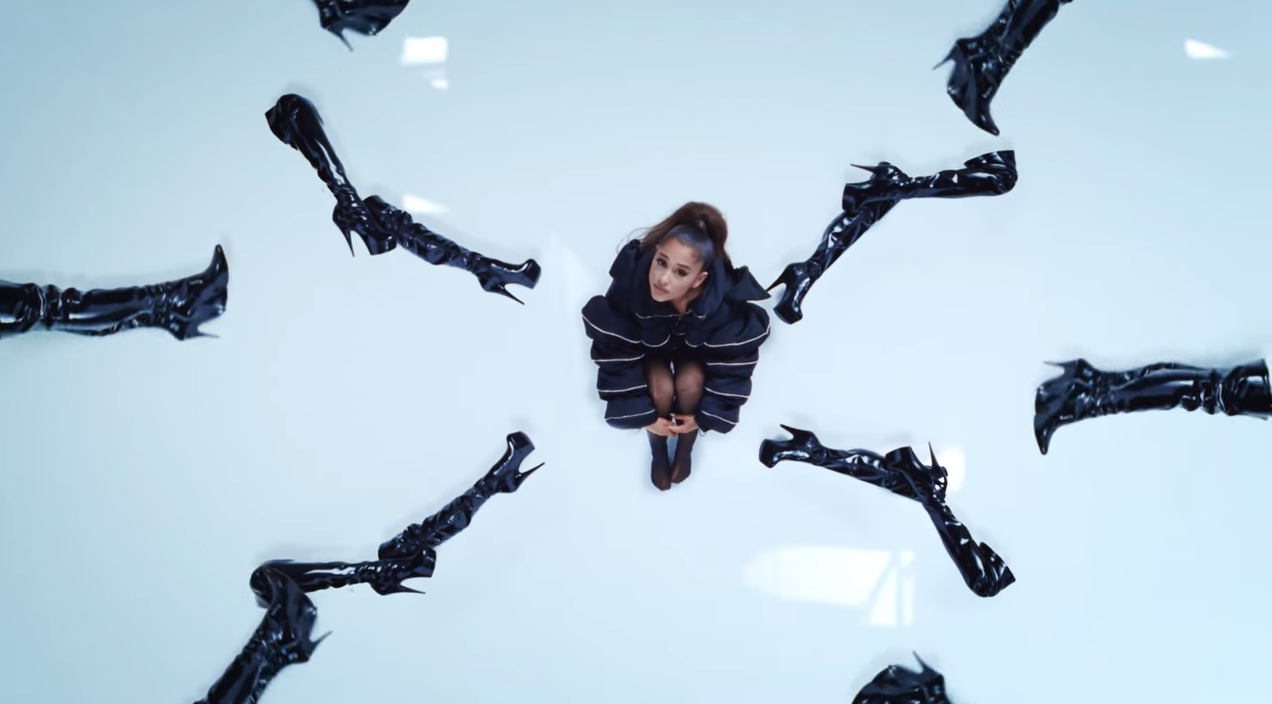As Ariana Grande continues to infiltrate the world of high fashion on the heels of her campaign for Givenchy, a music video made especially for Vogue seems only natural as opposed to non sequitur. The song in question tasked for being rendered to video specifically for Vogue? Well, “In My Head,” of course. For what track could be more tailor-made to an industry that makes its money on body dysmorphic self-perception? And, to the point of perception, the visual motifs of the video very much coincide with the lyrics of the song, which discuss Grande’s tendency to falsely paint a picture of someone she initially thinks she’s fallen in love with, only to find that they’re not quite who she thought they were.
Alas, it’s something many can relate to, particularly in the age where internet-curated “profiles” serve as the initial gatekeeper to how people want to be perceived in the first place before the surface that is a screen gets in any way penetrated by the tactile. Grande manifests the abstraction that is the “self” other people see by making parts of herself literally invisible–an overt metaphor for the way in which we do that with the aspects of ourselves we don’t want to be seen versus the ones we want to play up to perhaps mitigate what we view as our unlovable flaws. The ones that others need to have what can best be described as “Snapchat eyes” (of the sort innovated by Sound Garden’s “Black Hole Sun” video) to see–the same ones Grande adopts at one point to play with the concept of illusion–what’s in your head–as opposed to what’s really objective.
In Grande’s case, her “signatures”–the thigh-high boots and long ponytail–are underscored as detached entities from her “complete person” as she sings such telling lyrics as, “Painted a picture/I thought I drew you well/I had a vision/Seeing what isn’t there” and “When you broke my heart, I said you only wanted half of me.” That half, naturally, being the “attractive” physical portion of her (connoted by the feminine accoutrements of long hair and heels) without any of the emotional baggage that she (and most) comes with.
Directed by Bardia Zeinali, who first worked with Grande on her collaboration with Troye Sivan for the “Dance To This” video, Grande is allowed to confront her demons in “the white room of her own mind” in a way that somehow seems much more fraught than the way Jamiroquai was carrying it off in “Virtual Insanity” (granted, he had more of a “filing cabinet” room than a pure white one). And as she’s permitted to engage in the platform on which her pop star persona of the twenty-first century has been built on (self-care and being unafraid to declare one’s imperiled mental health), we can see that maybe there’s more of the Billie Eilish strain in her than people give her credit for. Purely because of their perception of her as an antiquated form of pop star with her “oversexed” aesthetic. But then, that’s just part of the “pop philosophy” that exists within the emotional and resonant lyrics of “In My Head,” all the more manifest in the phantom visuals that accompany them.



















